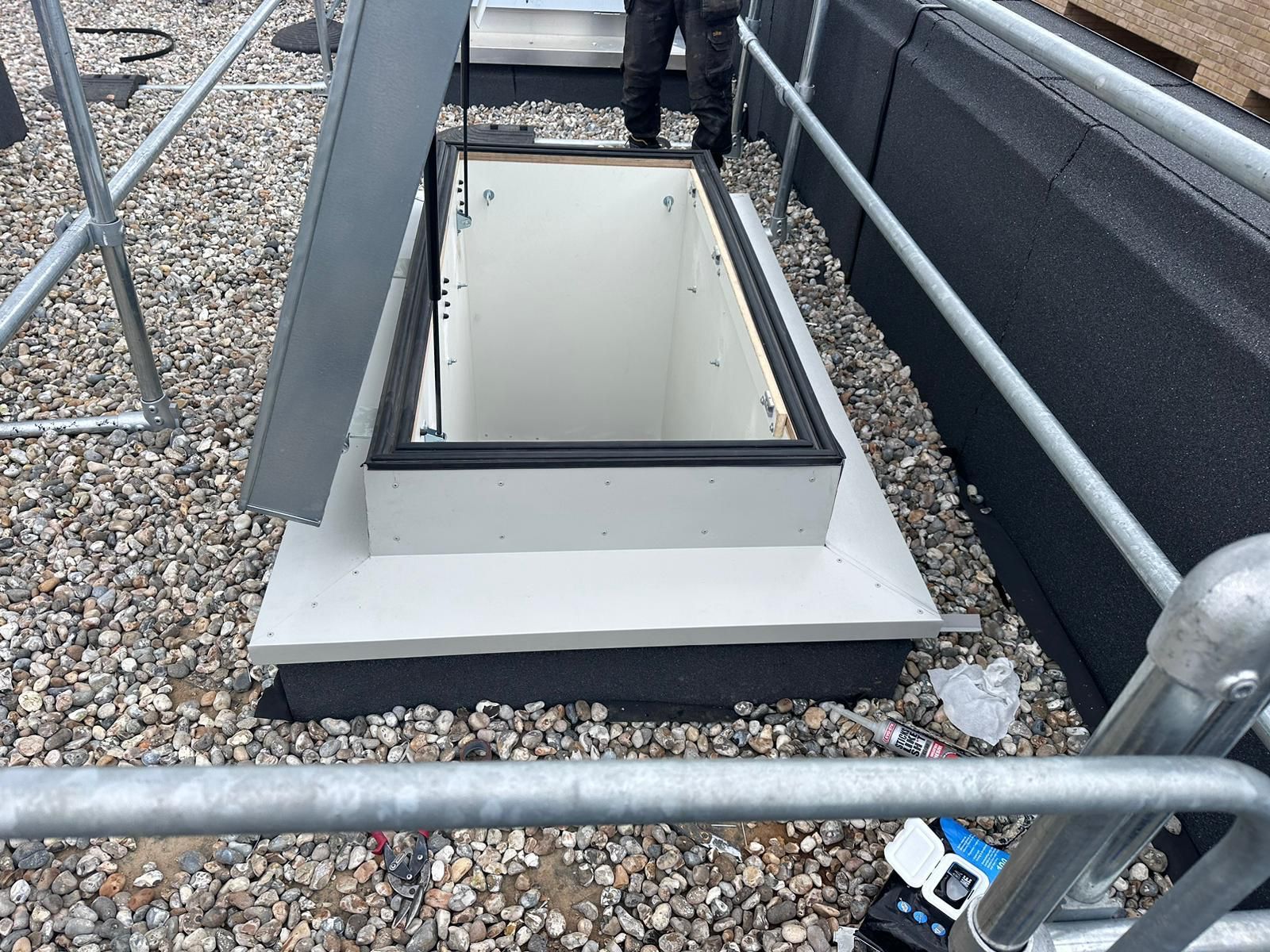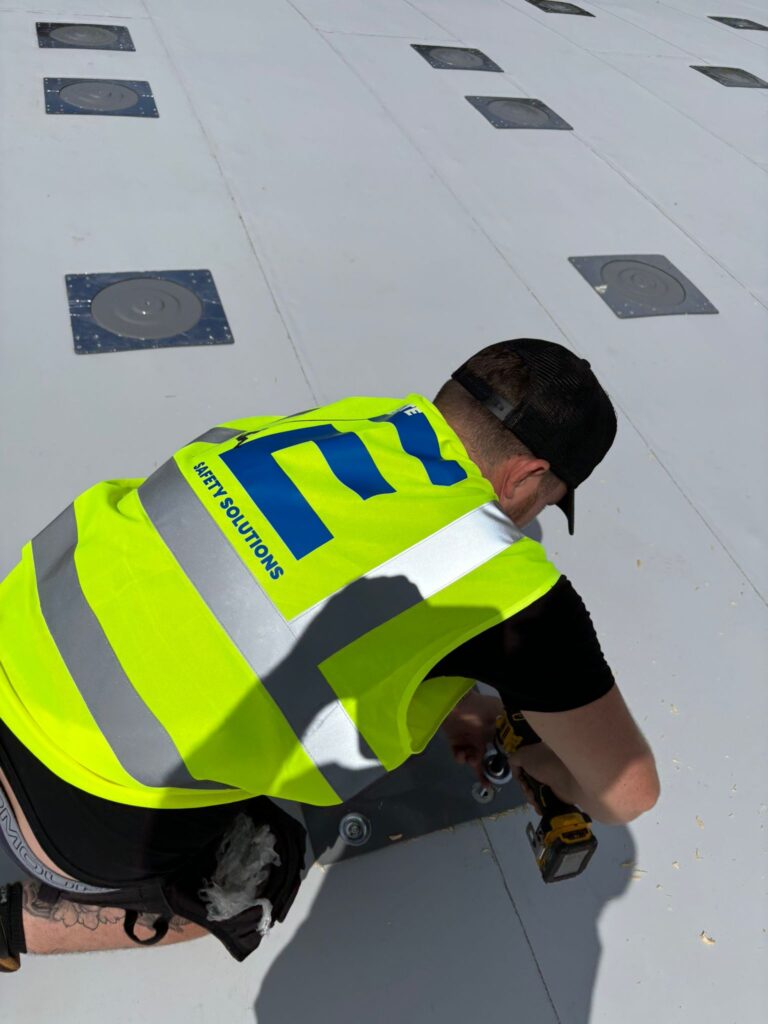What Are Hatch Installations? Guide To Hatch Installations In Hampshire
Hatch installations in Hampshire provide safe and controlled access to rooftops, floors, basements, and maintenance areas. These hatches are designed to ensure safety, security, and weather protection, making them essential for commercial buildings, industrial sites, and residential properties.
Hatch installations serve various purposes depending on the type of property. Roof hatches allow safe access to rooftops for repairs and maintenance. Floor hatches provide entry to underground spaces such as basements, tunnels, or service areas. Fire-rated hatches enhance fire safety by slowing the spread of fire and smoke in case of an emergency.
A properly installed hatch helps to prevent falls, restrict unauthorised access, and comply with UK building regulations. Many workplaces require hatches to ensure workers can move safely between levels without the risk of injury. Businesses and homeowners must choose high-quality, secure hatches to meet safety requirements and ensure durability over time.
When planning hatch installations in Hampshire, it is essential to consider material strength, security features, weather resistance, and fire protection ratings. Hiring a professional installer ensures the hatch is fitted correctly and meets UK safety regulations.
In this guide, we will explain:
- Why hatch installations are important for safety
- Types of hatch installations and their uses
- How to choose the right hatch for your needs
- The installation process and what to expect
If you are looking for hatch installations, this guide will provide all the information you need to make the right decision.
Why Hatch Installations In Hampshire Are Important For Safety
What Are Hatch Installations?
Hatch installations refer to the fitting of secure access hatches in roofs, floors, ceilings, or walls to provide controlled entry to specific areas. These hatches are commonly used in commercial, industrial, and residential buildings to allow safe movement between spaces while ensuring security, fire protection, and weather resistance.
Hatches are used for various purposes, including:
- Roof hatches – for accessing rooftops safely for maintenance and inspections.
- Floor hatches – for entry to underground areas such as basements and service tunnels.
- Fire-rated hatches – designed to slow the spread of fire and smoke in case of an emergency.
- Loft hatches – for residential attic access and storage.
Properly installed hatches enhance safety, comply with UK regulations, and prevent accidents in high-risk areas.
Preventing Falls and Workplace Injuries: Falls from height are one of the most common causes of injuries on construction sites and commercial properties. Roof and floor hatches are designed to allow safe and controlled access, reducing the risk of workers tripping, slipping, or falling. Features like anti-slip surfaces, secure latches, and guardrails help prevent accidents. Without a properly installed hatch, workers may need to use unsafe access methods, such as ladders or unstable platforms, increasing the likelihood of falls.
Protecting Against Unauthorised Access: Hatches provide restricted access to sensitive areas, ensuring that only authorised personnel can enter. In workplaces, this prevents trespassing, theft, or unauthorised use of hazardous areas. Many hatch designs include locking mechanisms to secure restricted spaces such as maintenance rooms, underground tunnels, and rooftop access points. In residential settings, loft and basement hatches add an extra layer of security, preventing access to spaces where valuable equipment or stored items are kept.
Ensuring Compliance With UK Safety Regulations: UK safety laws require businesses and property owners to provide safe access solutions for workers and maintenance teams. The Work at Height Regulations 2005 states that all workplaces must have proper fall protection and access systems, which include hatch installations. For fire safety, fire-rated hatches must meet British Standards (BS EN 12101-2) to prevent the rapid spread of fire and smoke. Compliance with these laws helps businesses avoid fines, legal penalties, and safety risks.
Fire Safety and Smoke Control: Fire-rated hatches are designed to contain smoke and flames, preventing fire from spreading to other sections of a building. These hatches provide a critical barrier in case of an emergency, giving occupants more time to evacuate safely. Many commercial and residential buildings are required by law to install fire-rated hatches, especially in multi-storey properties, stairwells, and industrial facilities. Proper installation ensures these hatches perform effectively under fire conditions.
Weather and Environmental Protection: Hatches also serve as protective barriers against weather conditions such as rain, wind, and extreme temperatures. In Hampshire, where weather can be unpredictable, properly sealed hatches prevent leaks, structural damage, and energy loss. Roof hatches, in particular, must be designed to withstand heavy rain and strong winds, ensuring that buildings remain insulated and protected throughout the year.

Types Of Hatch Installations In Hampshire And Their Uses
Hatch installations come in different types, each designed for specific uses. Whether for rooftops, floors, fire safety, or loft access, choosing the right hatch depends on the purpose, location, and safety requirements of the building.
Roof Hatches: Roof hatches provide safe and secure access to rooftops for maintenance, inspections, and repairs. These hatches are commonly found in commercial buildings, industrial facilities, and multi-storey properties where rooftop access is needed for HVAC maintenance, cleaning, or emergency escape routes.
Features of roof hatches include:
- Weather-resistant seals to prevent leaks and water damage.
- Insulated panels to improve energy efficiency.
- Secure locking systems to prevent unauthorised access.
- Anti-slip surfaces for safety when stepping onto the roof.
Businesses and property owners must ensure that roof hatches meet UK building regulations to prevent fall hazards and maintain security.
Floor Hatches: Floor hatches are installed in basements, service tunnels, and underground access points. They provide a safe and controlled entry to areas beneath a building, such as utility rooms, drainage systems, or storage spaces.
Key benefits of floor hatches:
- Heavy-duty materials to withstand foot traffic and vehicle loads.
- Flush-mounted designs to prevent tripping hazards.
- Secure locking mechanisms for restricted access.
- Fire-rated options for improved safety.
These hatches are essential in commercial kitchens, warehouses, and industrial plants, where floor access points must be strong, durable, and easy to operate.
Fire-Rated Hatches: Fire-rated hatches are designed to prevent the spread of fire and smoke between building sections. These hatches are commonly used in stairwells, emergency exits, and fire-resistant walls to comply with UK fire safety laws.
Features of fire-rated hatches include:
- Heat-resistant materials that slow fire spread.
- Smoke seals to block toxic fumes.
- Automatic closing mechanisms for safety in emergencies.
- Certified compliance with BS EN 12101-2 fire standards.
Installing fire-rated hatches is a legal requirement in many commercial and residential properties, ensuring safe evacuation routes and protecting occupants during a fire emergency.
Loft Hatches: Loft hatches provide access to attic spaces in residential properties. They are designed for easy opening and secure sealing to prevent heat loss and draughts.
Loft hatch features include:
- Insulated panels for energy efficiency.
- Secure hinges and latches for safe access.
- Drop-down or sliding designs for convenience.
Many homeowners upgrade their loft hatches to improve energy savings and fire safety, ensuring compliance with building regulations.
How To Choose The Right Hatch Installation In Hampshire
Selecting the best hatch installations in Hampshire requires careful consideration of safety, security, durability, and compliance with UK regulations. Whether for a commercial, industrial, or residential property, choosing the right hatch ensures safe access, weather protection, and long-term reliability.
1. Identify The Purpose Of The Hatch
The first step in choosing the right hatch is determining its intended use. Different types of hatches serve different functions, such as:
- Roof hatches for safe rooftop access.
- Floor hatches for underground entry points.
- Fire-rated hatches for fire safety compliance.
- Loft hatches for home insulation and attic access.
Understanding the purpose of the hatch helps ensure that it meets safety standards and performs efficiently in the required setting.
2. Consider Material And Build Quality
Hatches come in a variety of materials, each offering different levels of strength, insulation, and weather resistance:
- Steel hatches – Highly durable and ideal for high-security and industrial use.
- Aluminium hatches – Lightweight, rust-resistant, and commonly used for commercial and residential properties.
- Timber hatches – Mostly found in loft access points where insulation is needed.
- Glass-reinforced plastic (GRP) hatches – Corrosion-resistant and used in marine or chemical environments.
Choosing the right material ensures the hatch lasts longer, remains secure, and withstands environmental conditions.
3. Check Security And Locking Features
Security is a major factor, especially for roof and floor hatches that provide entry points to restricted areas. Look for:
- Heavy-duty locking mechanisms to prevent unauthorised access.
- Tamper-proof designs for commercial and industrial use.
- Keyed or digital access control for added security.
For properties requiring high security, it’s essential to install hatches that offer reinforced locking systems and anti-theft protection.
4. Ensure Compliance With UK Building Regulations
Hatch installations must comply with UK safety laws to ensure they are fit for purpose. Important regulations include:
- The Work at Height Regulations 2005 – Governs safe rooftop access.
- BS EN 12101-2 – Required for fire-rated hatches.
- Building Regulations Part L – Covers insulation and energy efficiency for loft hatches.
Ensuring compliance prevents legal issues, fines, and safety risks.
5. Work With A Trusted Installer
Professional installation guarantees that the hatch is fitted correctly and safely. Choose an installer who:
- Has experience with different types of hatches.
- Is certified to meet UK safety standards.
- Provides a warranty and ongoing maintenance support.
A well-installed hatch improves safety, efficiency, and durability, ensuring long-term performance.

The Hatch Installation Process: What To Expect
Understanding the installation process helps property owners and businesses prepare for a safe and efficient fitting. Whether installing a roof access point, floor entry panel, fire-rated cover, or loft opening, working with a qualified installer ensures compliance with UK building regulations and guarantees long-term durability.
1. Site Assessment And Planning
Before installation begins, the installer will inspect the site to determine:
- The best location for the access system based on usability and safety regulations.
- Structural integrity to ensure the surface can support the new entry point securely.
- Weatherproofing and insulation requirements, especially for overhead or attic openings.
- Fire safety considerations, if a fire-resistant panel is being fitted.
A detailed site assessment ensures that the unit meets safety, functionality, and legal requirements.
2. Selecting The Right Access Solution
Once the site is assessed, the installer will help choose the appropriate model, considering:
- Material strength (steel, aluminium, timber, or GRP).
- Security features (locking mechanisms, reinforced designs).
- Weather and fire resistance (insulated panels, smoke seals).
Selecting the right entry system ensures long-term performance and safety compliance.
3. Preparing The Installation Area
Before fitting the unit, the installer will:
- Mark the exact location where the fixture will be placed.
- Cut and reinforce the opening to support the weight and structure of the unit.
- Ensure proper alignment for easy operation and secure closure.
For rooftop and floor entry points, additional support may be added to prevent structural damage or misalignment.
4. Fitting The Access Panel
The unit is then securely fixed in place using anchors, screws, or brackets. The installation process includes:
- Sealing the edges to prevent leaks, drafts, or energy loss.
- Checking alignment to ensure smooth opening and closing.
- Fixing security locks and safety mechanisms where necessary.
Fire-resistant panels require additional fireproofing materials to ensure compliance with BS EN 12101-2 standards.
5. Final Inspection And Testing
Once the unit is installed, the installer will:
- Conduct a full inspection to ensure correct fitting.
- Test the access system for smooth operation and security.
- Check compliance with UK building regulations.
After the installation is approved, the customer receives documentation and maintenance guidelines for long-term use.
Get Professional Hatch Installations In Hampshire Today
Investing in hatch installations is essential for safe access, security, and compliance with UK safety regulations. Whether you need a rooftop entry system, floor opening, fire-rated cover, or loft access panel, ensuring professional installation guarantees durability, functionality, and protection for your property.
A properly fitted access point prevents fall hazards, unauthorised entry, and environmental damage, making it a valuable addition to any commercial, industrial, or residential building. With secure locking mechanisms, fire-resistant materials, and weatherproof designs, modern systems offer safety, efficiency, and long-term reliability.
At Elite Safety Solutions, we specialise in hatch installations in Hampshire, offering expert guidance, high-quality products, and professional fitting services. Our team ensures that every access solution meets UK building standards, providing secure and compliant installations for businesses and homeowners.
If you need safe and reliable hatch installations, our team is ready to assist. We offer:
Custom solutions for different property types
Certified and compliant installation
High-quality materials for durability and security
Expert advice on selecting the right access system
Do not compromise on safety. Book your installation today by calling Elite Safety Solutions at 02393430067 to discuss your requirements and schedule a professional fitting. Our team is committed to delivering safe, high-quality, and fully compliant hatch installations in Hampshire.
